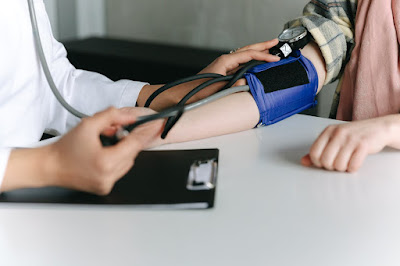What are the blood groups?
Although all human blood looks red and is basically made up
of the same plasma, cells, etc., the presence or absence of certain protein
molecules in the blood divides the kinds of blood into different groups.
There can be four different types or groups of blood and
every person can be classified under one of these. These groups are called A,
B, O and AB. Anthropologists who study the physical development of the human
race, use blood groups as one of the ways of showing relationships among
individuals and population groups.
The four blood groups can further be divided into subgroups.
If a person has to be given blood because of some physical problem, it is
essential to give him the blood which matches his blood.
If the blood from two different groups is mixed, a reaction
between the protein molecules in the red cells and the plasma makes the blood
clump. These chemical reactions make it dangerous for a person to receive a
blood transfusion from someone with a different blood group.
If the cells are removed from blood, then the remaining
plasma can be given to anyone even if the blood groups are different.
How does blood clot?
Blood is essential for the human body. The body of an
average, healthy person has about six litres of blood moving inside it.
Loss of too much blood can kill a person, although a healthy
person can still live after losing as much as one-third of the body’s blood.
When an area or part of the body gets cut by any sharp instrument, blood oozes out.
But soon the blood drives and the flow stops.
Coagulation or clothing of blood is one of nature’s ways
of protecting the human body. Each person’s blood clots at a slightly different
rate.
And there are some people whose blood clots very slowly
or not at all. This condition is called haemophilia and can be dangerous unless
constant precaution is taken.
The first thing that happens when blood starts clotting is
the appearance of fibrin in the blood. Very fine threads of fibrin form a kind
of net by cries crossing each other in all directions.
They trap the blood
cells which soon solidify. The fibrin threads are firm and elastic. When the
damaged cells of the wound are replaced the outer layer of the cells or the
scab falls off.
The blood flowing inside the body does not and must not clot.
Clotting of the blood inside the circulatory system is as dangerous as it is not
clotting outside a wound.
A substance called
heparin in the body helps blood remain in flowing condition. Blood does not
clot when it remains in contact with the smooth walls of the blood vessels. An
injury or contact with a rough surface is essential to start the clotting
process.
Why does the doctor
take your blood pressure?
The heart inside our body works like a pump sending blood to and from the entire body. Just as water rushing through a hose exerts pressure on the hose, the blood passing through the vessels in your body exerts pressure on the walls of these. A doctor needs to know your blood pressure because it can tell the condition of the heart and the arteries, their strength and some other important facts regarding your health.
When the left ventricle of the heart contracts the pumping
action occurs. It forces the blood out into the arteries which expand to receive
the flow of blood.
The muscular living of the arteries resist this pressure and
the blood is squeezed out of them into the smaller vessels of the body. The
resultant amount of pressure on the blood is called the blood pressure.
When a doctor has to measure someone‘s blood pressure, he
attaches a rubber cuff to the arm just above the elbow. This cuff can be pumped
and filled with air like a balloon.
When the doctor fills this cuff so that it holds the arm
tightly and stops the flow of blood through the artery in the arm. Then the air
is allowed to come out of the cuff. The blood rushes through the artery and the
doctor takes the reading with the help of a tube containing mercury.
This first reading is called the “maximum” reading which
tells the doctor your blood pressure when the heart is pumping.
The second or the
“minimum” reading is taken to show the blood pressure when the heart is in the resting stage. The blood pressure reading always has two readings called the
maximum/minimum blood pressure.
The average blood pressure of a healthy adult is 120/80. But the reading can vary for different persons and also in the same person at different times.


